Key Takeaways
- Different mite species have unique entry methods, such as dust mites spreading internally and clover mites entering through exterior cracks.
- Bird mites infest via abandoned nests, storage mites come through contaminated foods, and rodent mites spread through rodents.
- High humidity, warmth, and abundant food sources significantly increase mite populations.
- Prevention includes controlling environmental conditions, sealing entry points, regular cleaning, and proper food storage.
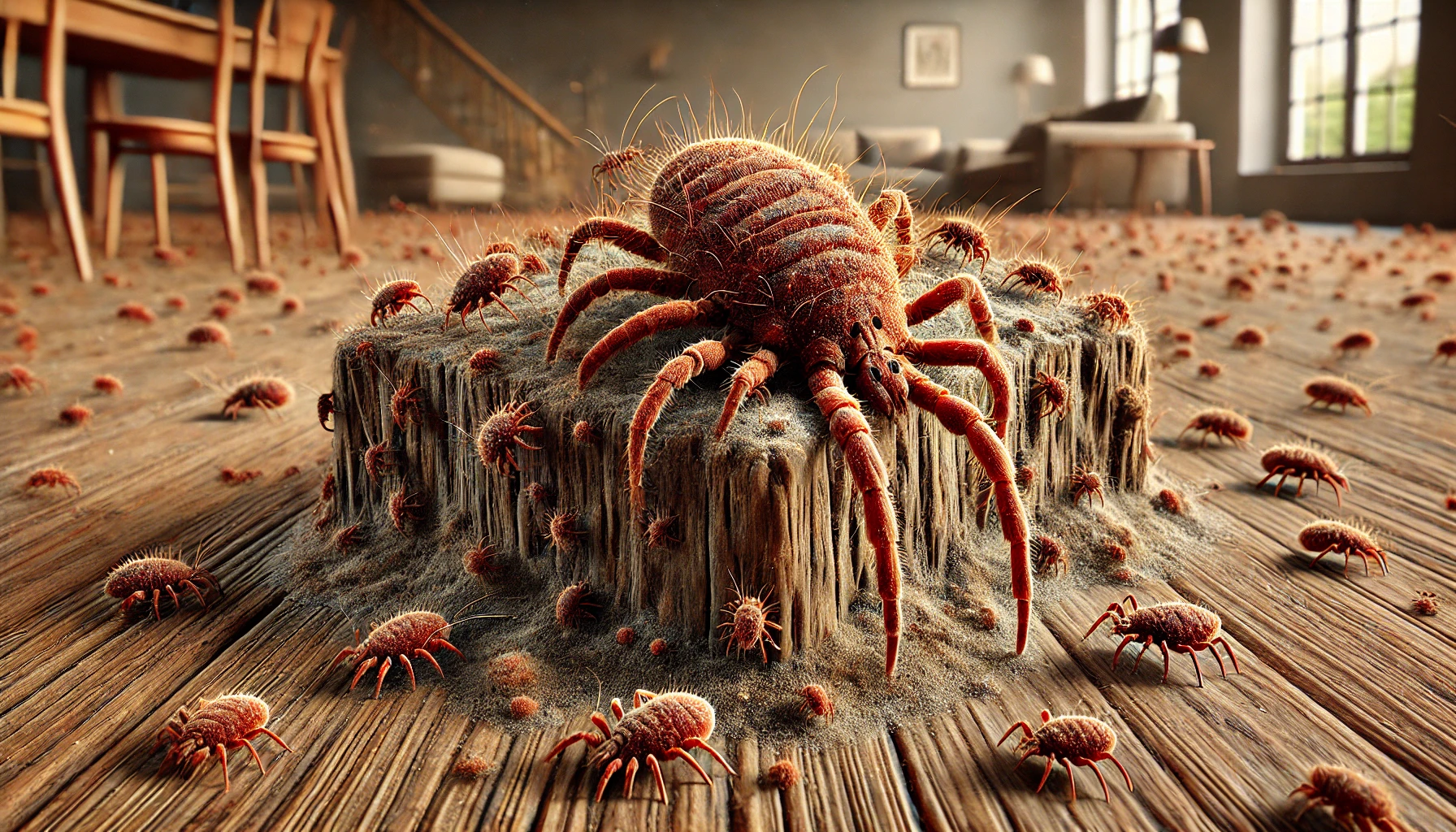 Mites are incredibly small pests, often invisible to the naked eye, yet their impact on household comfort and health is significant. For homeowners across the United States, understanding precisely how mites find their way indoors is the first critical step towards effectively preventing infestations.
Mites are incredibly small pests, often invisible to the naked eye, yet their impact on household comfort and health is significant. For homeowners across the United States, understanding precisely how mites find their way indoors is the first critical step towards effectively preventing infestations.
This comprehensive guide explores the entry methods, environmental conditions, and practical prevention strategies related to various common mites, including dust mites, clover mites, bird mites, storage mites, and rodent mites.


Not getting a solution?
Get your free pest control estimate today!Dust mites thrive in areas rich in human and animal skin flakes, which makes bedding, mattresses, upholstered furniture, and carpets ideal habitats. Although they are invisible to the naked eye, but their presence is felt through allergic reactions such as sneezing, itchy eyes, congestion, and even asthma attacks in sensitive and prone to individuals. How Dust Mites Spread Dust mites spread effortlessly within homes, primarily through air currents, human movement, and relocation of household items. When you move furniture, bedding, or clothing from one location to another, you inadvertently transport dust mites and their eggs. They flourish in environments with high humidity (above 50%) and temperatures between 70-80°F.
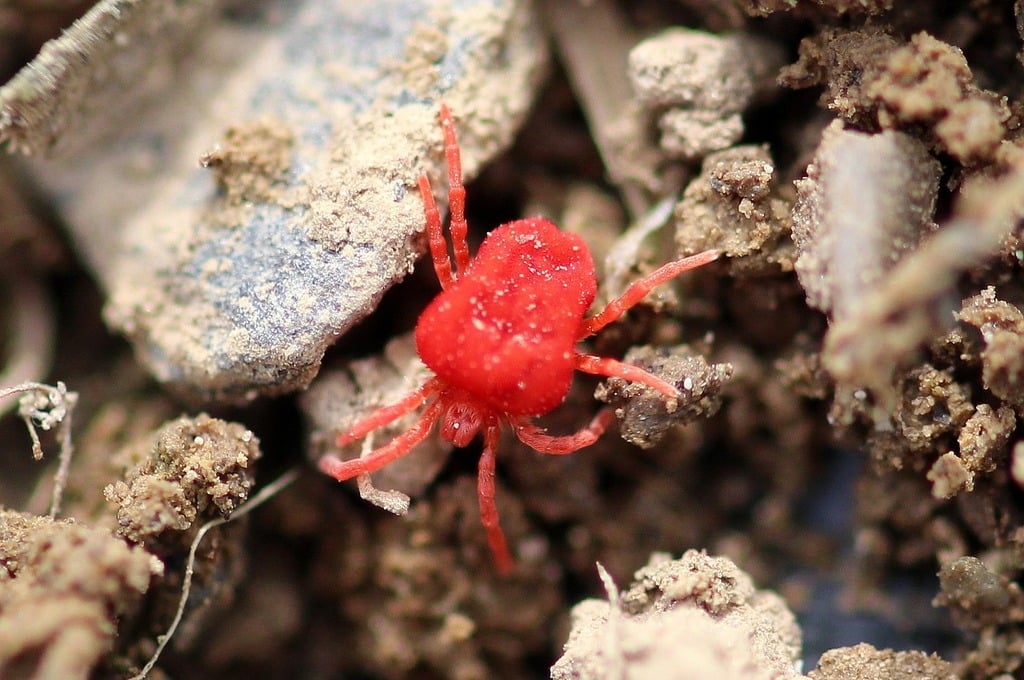 Clover Mites: Invaders from the Garden
Clover mites are tiny, reddish insects often found outdoors on plants and grasses. They typically become a nuisance when they enter homes in large numbers during seasonal temperature changes, particularly in spring and autumn. Despite their harmlessness to humans—they neither bite nor transmit diseases—their sheer numbers and staining ability (when crushed) make them unwelcome guests.
How Clover Mites Enter Homes
Clover mites infiltrate homes through exceedingly small gaps and cracks around windows, doors, foundations, and siding. Their small size makes it easy for them to slip through screens and under doors, especially on the warmer sides of buildings.
The primary attractants for clover mites include heavily fertilized lawns, lush vegetation close to the home’s exterior, and abrupt changes in outdoor temperatures, prompting their migration indoors.
Clover Mites: Invaders from the Garden
Clover mites are tiny, reddish insects often found outdoors on plants and grasses. They typically become a nuisance when they enter homes in large numbers during seasonal temperature changes, particularly in spring and autumn. Despite their harmlessness to humans—they neither bite nor transmit diseases—their sheer numbers and staining ability (when crushed) make them unwelcome guests.
How Clover Mites Enter Homes
Clover mites infiltrate homes through exceedingly small gaps and cracks around windows, doors, foundations, and siding. Their small size makes it easy for them to slip through screens and under doors, especially on the warmer sides of buildings.
The primary attractants for clover mites include heavily fertilized lawns, lush vegetation close to the home’s exterior, and abrupt changes in outdoor temperatures, prompting their migration indoors.
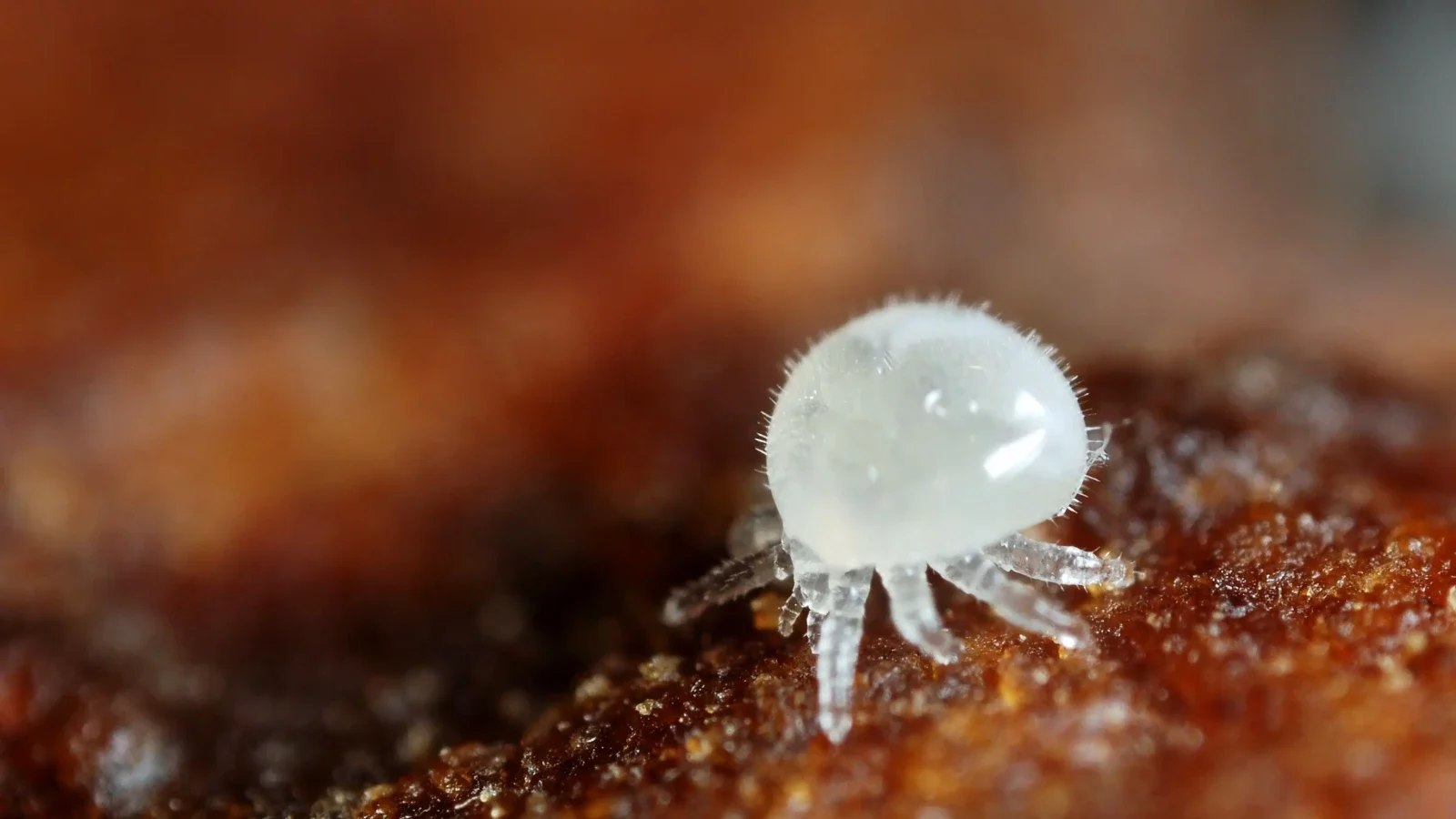 Bird Mites: Unwanted Hitchhikers
Bird mites primarily infest birds and their nests but often invade homes when their avian hosts leave, either voluntarily or through removal. These mites feed on the blood of birds but will readily bite humans when deprived of their preferred hosts, causing discomfort and skin irritation.
Entry Points for Bird Mites
Bird mites enter homes through attic vents, chimneys, rooflines, or any structural gap where birds might nest. The mites migrate indoors seeking new hosts once nests are abandoned. This typically happens in spring and early summer when bird nesting activities peak.
To mitigate bird mite infestations, homeowners must promptly remove bird nests from rooftops, attics, and chimneys and thoroughly clean affected areas.
Bird Mites: Unwanted Hitchhikers
Bird mites primarily infest birds and their nests but often invade homes when their avian hosts leave, either voluntarily or through removal. These mites feed on the blood of birds but will readily bite humans when deprived of their preferred hosts, causing discomfort and skin irritation.
Entry Points for Bird Mites
Bird mites enter homes through attic vents, chimneys, rooflines, or any structural gap where birds might nest. The mites migrate indoors seeking new hosts once nests are abandoned. This typically happens in spring and early summer when bird nesting activities peak.
To mitigate bird mite infestations, homeowners must promptly remove bird nests from rooftops, attics, and chimneys and thoroughly clean affected areas.
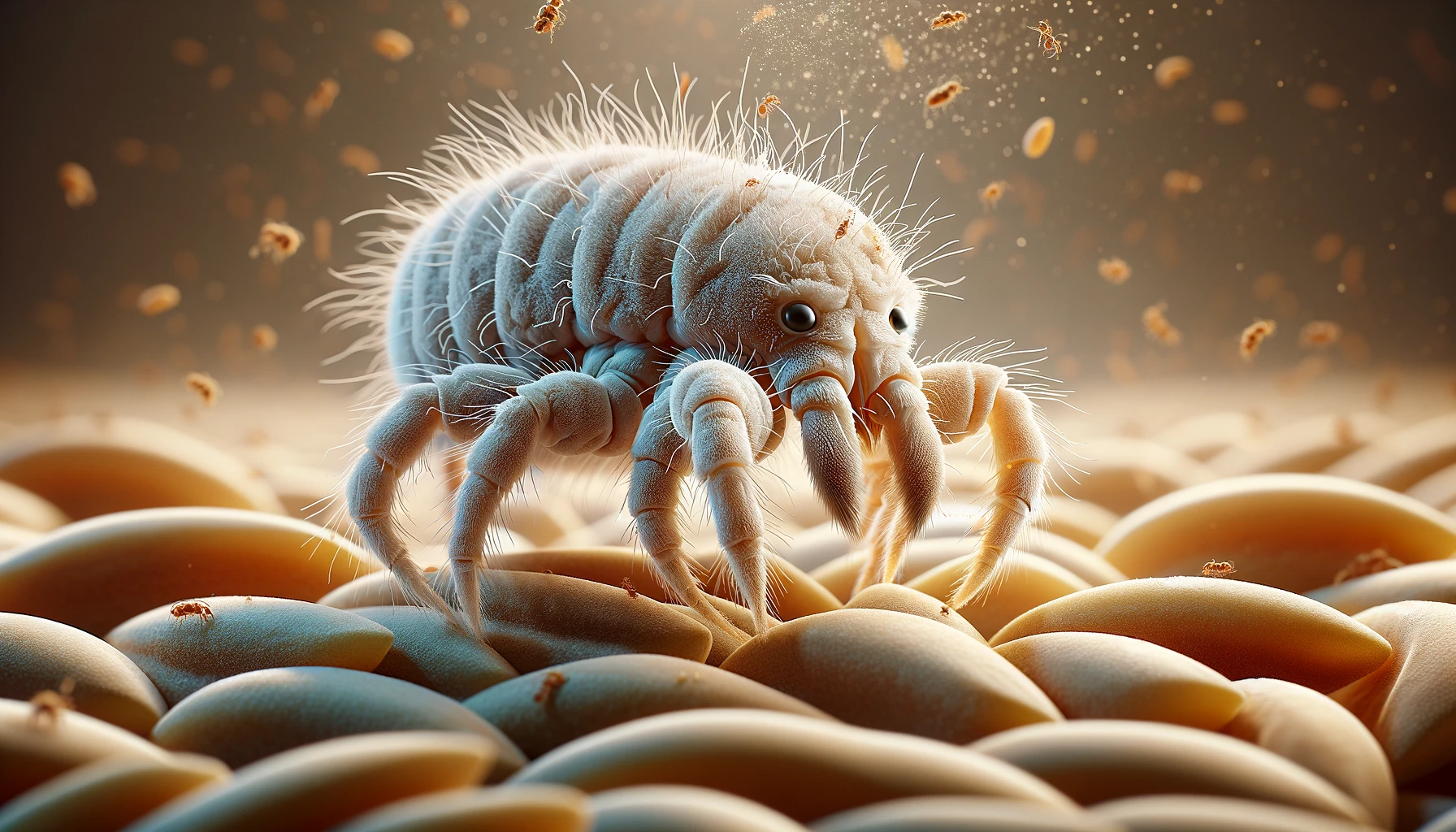 Storage Mites: Pantry Intruders
Storage mites, commonly called pantry mites, infest dry stored foods such as flour, cereals, pet food, and grains. These pests cause contamination and allergic reactions known as grocer’s itch, characterized by skin irritation from handling infested foods.
How Storage Mites Get Inside
Storage mites primarily enter homes hidden within food packaging, particularly goods stored in damp, humid conditions. They thrive in environments with temperatures between 70-85°F and humidity above 75%. Once inside a pantry, they rapidly multiply, spreading to nearby food items and causing extensive contamination.
Storage Mites: Pantry Intruders
Storage mites, commonly called pantry mites, infest dry stored foods such as flour, cereals, pet food, and grains. These pests cause contamination and allergic reactions known as grocer’s itch, characterized by skin irritation from handling infested foods.
How Storage Mites Get Inside
Storage mites primarily enter homes hidden within food packaging, particularly goods stored in damp, humid conditions. They thrive in environments with temperatures between 70-85°F and humidity above 75%. Once inside a pantry, they rapidly multiply, spreading to nearby food items and causing extensive contamination.
Proper storage practices, such as keeping dry foods in sealed, airtight containers and promptly disposing of infested products, are critical for managing storage mites.
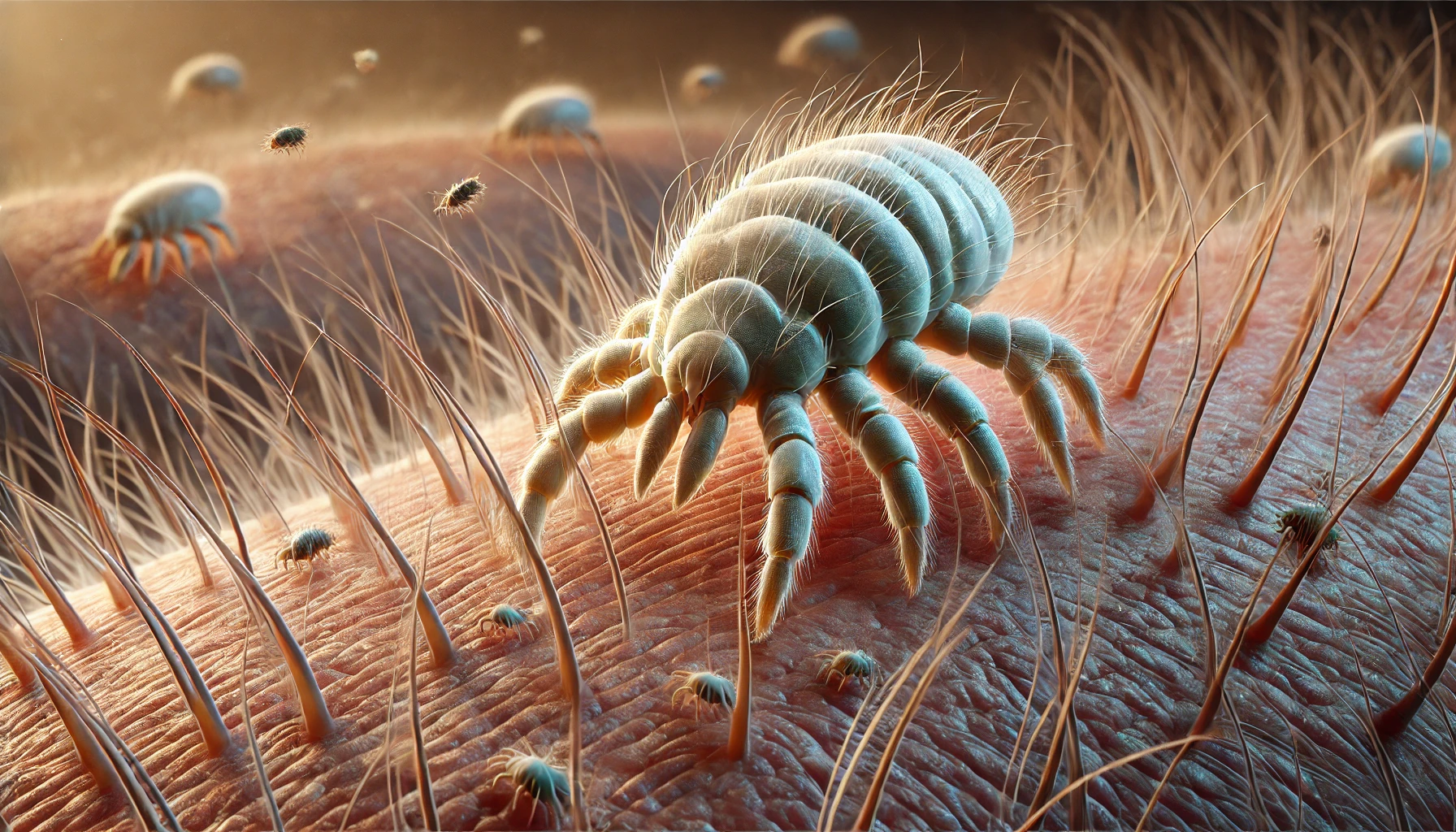 Rodent Mites: Linked to Rodent Activity
Rodent mites infest rodents like rats and mice, living and breeding on these animals. When rodents infest a home, they inadvertently introduce rodent mites, which can later become problematic, particularly when rodents are removed or exterminated.
Rodent Mite Entry Methods
Rodent mites gain entry to homes via the rodents themselves, moving through gaps, holes, or vents used by rodents. After rodent removal, mites leave the nests seeking new hosts, often finding their way into living spaces through walls, ceilings, and openings around plumbing and wiring.
Rodent Mites: Linked to Rodent Activity
Rodent mites infest rodents like rats and mice, living and breeding on these animals. When rodents infest a home, they inadvertently introduce rodent mites, which can later become problematic, particularly when rodents are removed or exterminated.
Rodent Mite Entry Methods
Rodent mites gain entry to homes via the rodents themselves, moving through gaps, holes, or vents used by rodents. After rodent removal, mites leave the nests seeking new hosts, often finding their way into living spaces through walls, ceilings, and openings around plumbing and wiring.
Conditions conducive to rodents—such as clutter, easily accessible food, and structural openings—indirectly contribute to rodent mite infestations.
Environmental Factors That Attract Mites
- To effectively and effeciently prevent mites from entering and seeing in your home, it’s crucial to understand the environmental conditions that encourage their presence:
-
High Humidity: Mites thrive in moist environments; maintaining humidity levels below 50% can significantly reduce their population.
-
Warm Temperatures: Most mites breed rapidly in temperatures ranging from 70-85°F.
-
Abundant Food Sources: Dust, human skin flakes, food products, and plant matter provide mites with ample nourishment.
-
Unsealed Homes: Structural gaps, cracks, and holes are primary entryways for mites and should be sealed.
How to Identify Mite Infestations
- Identifying mites directly is challenging due to their size. However, homeowners should watch for indirect signs:
-
Allergy Symptoms: Frequent sneezing, congestion, and skin irritation often indicate dust mites.
-
Visual Clues: Tiny red stains or moving dots near windows suggest the presence of clover mites.
-
Bite Marks: Small, itchy red bites may indicate bird or rodent mites.
-
Contaminated Foods: Infested food products with visible mites or unusual powdery residues signal storage mites.
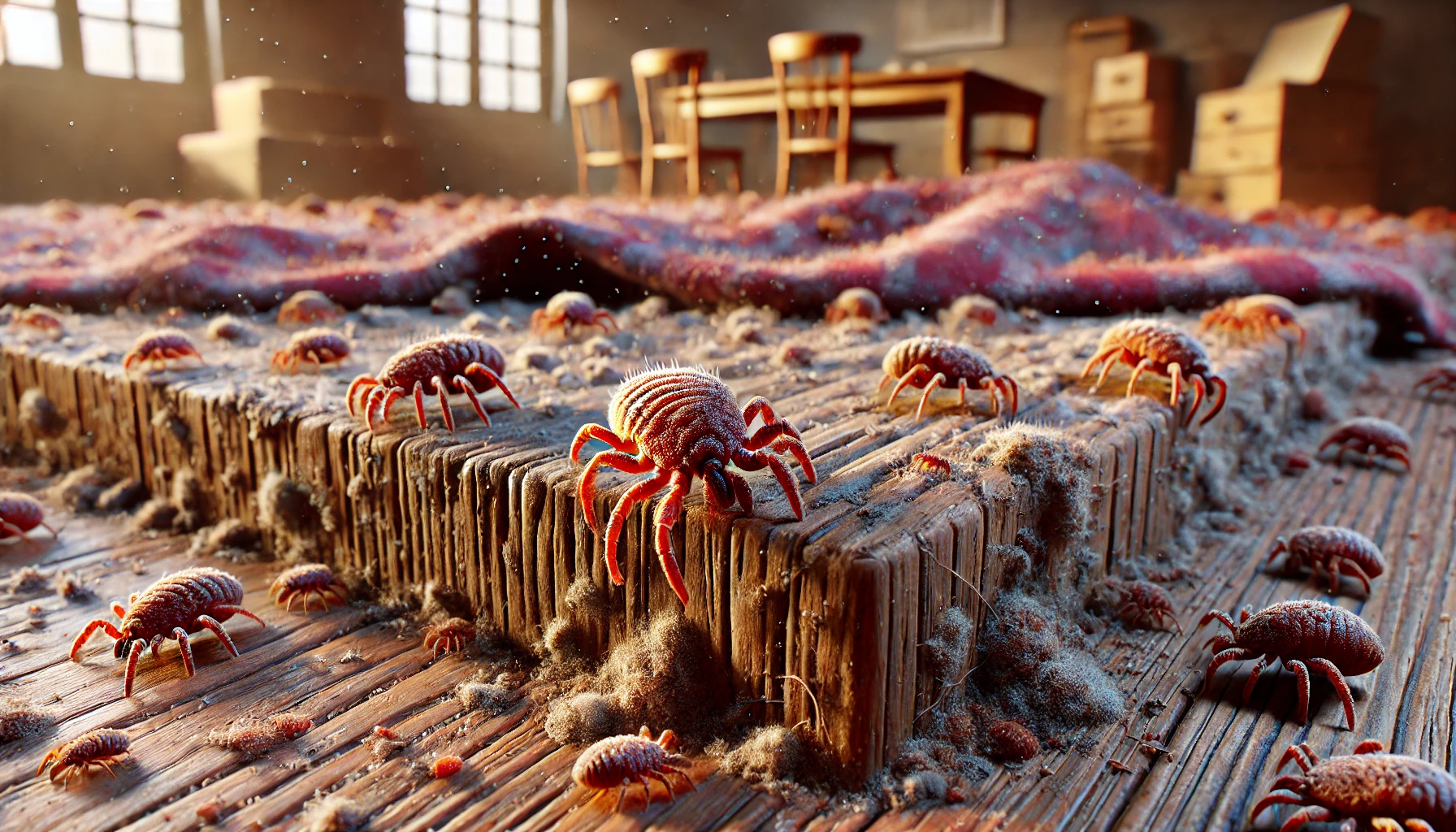
Effective Preventative Measures
Preventing mite infestations involves proactive steps: Regular Home Inspection Conduct regular inspections to spot potential entry points, especially before seasonal transitions. Pay special attention to foundations, window frames, attic openings, and rooflines. Structural Repairs Completely Seal all the appeared cracks, gaps, and holes with caulk or weatherstripping which ever the suitable way . Install fine-mesh screens over vents, chimneys, and other openings. Humidity Control Use proper dehumidifiers to maintain indoor humidity levels below 50%. Lower humidity helps deter dust mites and storage mites, significantly reducing their populations. Proper Cleaning Regular vacuuming with HEPA filters, washing bedding weekly in hot water, and routine dusting dramatically reduce dust mite populations. Thorough cleaning of pantry and storage areas prevents storage mite infestations. Lawn and Garden Management Maintain at least 18 inches between vegetation and your home’s foundation, reducing the risk of clover mite invasions. Avoid excessive fertilization, especially near building exteriors. Food Storage Practices Always store pantry items in airtight containers. Regularly inspect and promptly discard contaminated or expired products. Wildlife Management Quickly address rodent and bird infestations, including professional removal if necessary. Have a routine check and inspect attics, chimneys, and rooflines for nesting activity and implement preventive measures promptly.By understanding how mites enter homes and the conditions that attract them, homeowners can take precise, informed actions to mitigate risks and keep these microscopic invaders at bay. If you feel things have gone out of control, it is advised to contact pest control professionals. Our team can provide a customized approach to protect your home effectively.
Visit our Species, Control, and DIY Guide sections for additional resources on mites and ways to tackle a mites infestation.





